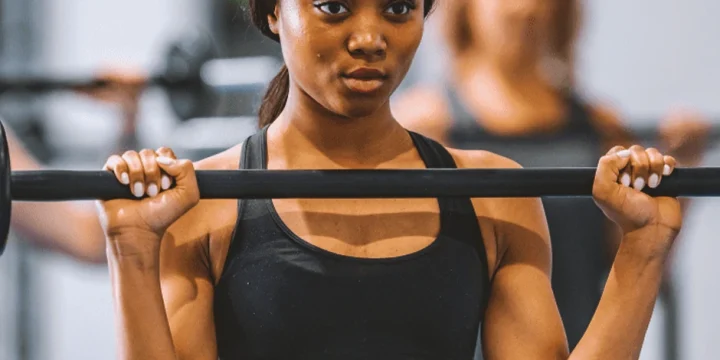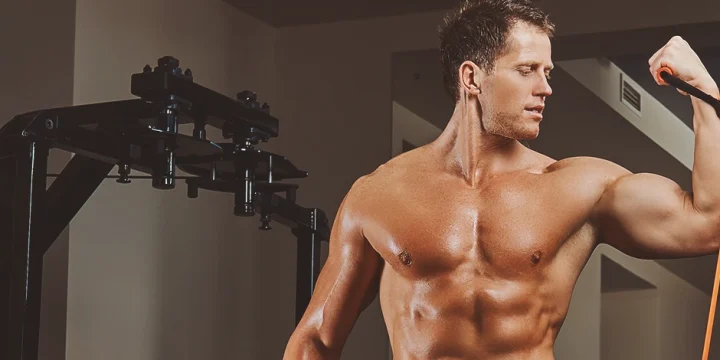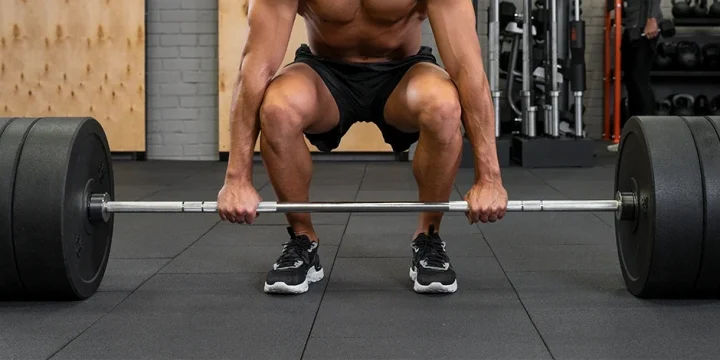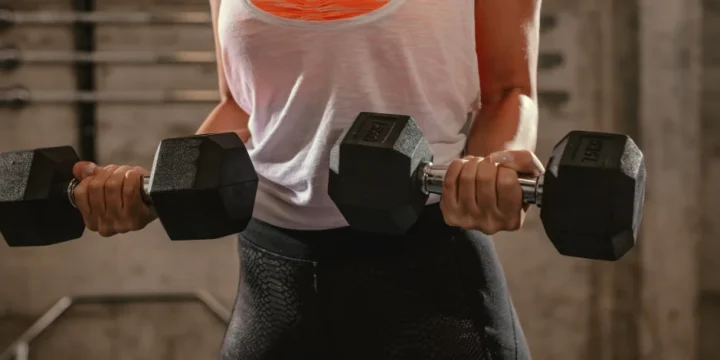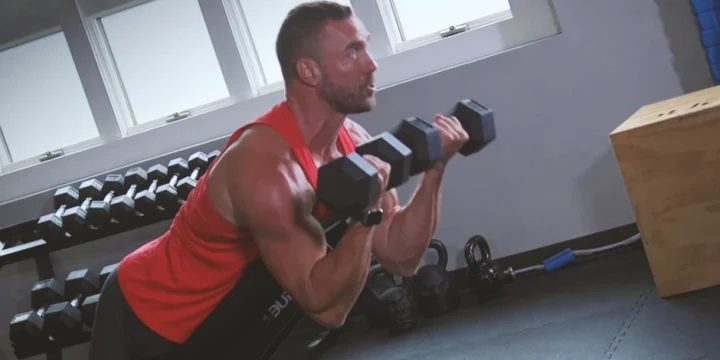One of the most common questions I get in my practice as a personal trainer is about how to do a cable curl.
Although it seems like a straightforward exercise, I always instruct my clients on how to keep in good form to avoid injury and get the most out of it.
In this article, we’ll go through steps to do it properly, different curl variations, and how to steer clear of some typical mistakes.
Quick Summary
- To perform cable curls, hold the bar on the cable machine, pull the bar upwards towards your shoulders, and ensure your muscles are fully contracted before starting the workout again.
- Bicep cable curls are beneficial for building strong biceps, improving wrist stability, and enhancing overall arm strength.
- The National Institute of Health notes that cable curls also engage the brachioradialis and brachialis muscles, in addition to the biceps.
- In my opinion, the variety of cable curl exercises, such as seated curls and hammer curls, offers a comprehensive approach to bicep development, catering to different strength levels and preferences.
How to Do a Biceps Cable Curl
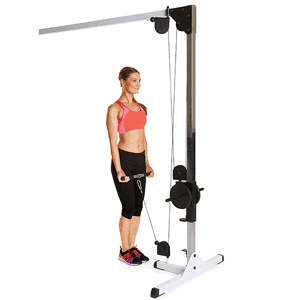
First, you need the cable machine and some attachments.
To perform a proper standing cable curl, follow these steps:
- Use a straight bar attachment connected to the pulley system of the cable machine (the lowest rung). You can adjust the cable rack and cable weight.
- Face the machine and keep your arms extended with palms facing upwards for a good grip.
- Take a step back from the pulley while keeping your feet shoulder-width apart to use the correct starting position. Hold the bar at thigh height.
- Inhale as you pull the bar upward towards your shoulders, bend your elbows, and engage biceps and core muscles. Keep your elbows close.
- As you bring the bar to your shoulders, pause until your muscles are fully contracted, then slowly lower it to your thighs in a controlled motion as you exhale to maintain constant tension.
- Do your reps in three sets with short breaks in between to reach cable curl targets.

3 Benefits of Doing the Biceps Cable Curl

As a personal trainer, I often recommend the cable curl exercise to target the bicep muscles, which, according to the National Institute of Health (NIH), also engages the brachioradialis and brachialis [1].
This exercise offers several benefits, including:
1 - Build Strong Biceps
Powerful biceps muscles not only look good but they are also vital for lifting heavy objects.
The engaged upper arm muscles during this exercise include:
- Anterior deltoid
- Brachialis
- Short head biceps brachii (especially during peak contraction, as noted by NIH [2])
- Long head
2 - Improve Strength
The cable biceps curl is a great exercise for chest muscles, scapula, and levator scapulae in the upper back.
Shoulder stability is critical when lifting weights. Because of this, focus on the upper back to improve muscle strength.
3 - Improve Wrist Stability
Besides the fact that it increases muscle size, the cable curl also improves wrist stability and strength.
5 Cable Curl Variations
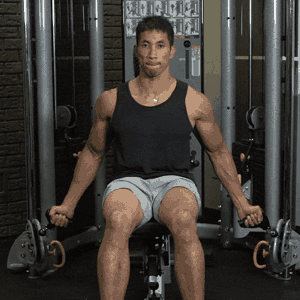
As a trainer, I often mix up my clients' gym sessions with various cable curl variations to enhance their exercise routines.
1 - Seated Biceps Cable Curls
The versatility of working with cables is that you can choose different benches. Some popular exercises:
- Preacher cable curl
- Incline bench cable curl
The seated position gives you a lot of leeways to adjust the cable tension and weight setting.
 2 - Cable Curl with One Arm While Standing
2 - Cable Curl with One Arm While Standing
Grasp the bar or handle attachment with one hand with the palm facing up. Steady yourself by firmly placing the other hand on your waist.
Ensure your upper part of your working arm remains stationary as you lift and lower the cable. Only move your forearms and choose a lighter weight if you find yourself struggling.
3 - Hammer Curl With Cable Rope
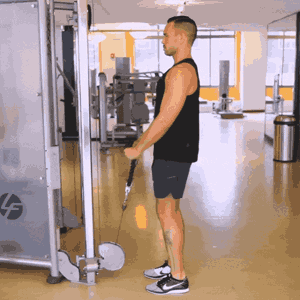
Use a rope cable curl to isolate the biceps brachii muscle. With a neutral grip, you focus both on the brachioradialis and brachialis.
The hammer cable curls work the short inner head of the biceps muscle.
Tense your abs while bending your knees slightly as you raise and lower the rope from your starting position.
4 - High Cable Curl
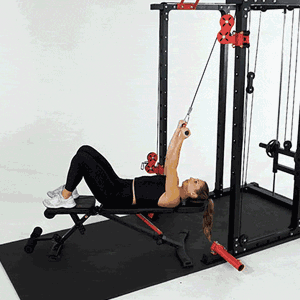
High cable machine curls are done with a sideways extension, bending the elbow at shoulder height. Place your feet shoulder-width apart. Lift your arm to the side and pull the rope to your shoulder.
High cable curls target the anterior deltoid, helping create further definition. Use one arm for more stability to balance yourself, or use both arms simultaneously.
5 - Underhand Grip Cable Curl
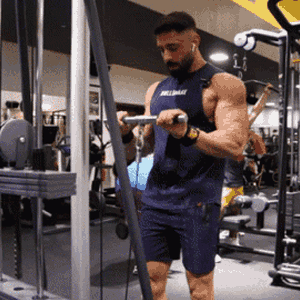
The overhand grip is called the pronated or reverse grip, which is excellent for building forearm muscles.
Switch hand grips (palms facing up or down and alternating hand grips) to build secondary muscles and improve grip strength.
3 Typical Errors To Avoid When Doing Cable Curls

As a personal trainer, I've noticed that people often make specific errors when using rope attachments or other methods.
Let me highlight three common mistakes to avoid for achieving proper form:
1 - Elbow Flaring
By flaring your arms to the sides, you perform a compound movement instead of isolating your biceps.
2 - Avoid the Use of Momentum
Another instinctive mistake is to use momentum. This excess of body movement creates poor form.
Instead, keep your body stationary, moving only your elbows and forearms while using weights you can easily lift.
3 - Use Your Full Range of Motion
Use the full range of motion when doing this exercise. If you are having difficulties, reduce the cable tension to something more manageable until you build enough strength.
4. Using Excessive Weight
Lifting too heavy can lead to poor form, including using momentum to complete the curl. This compromises muscle engagement and increases injury risk.
Choose a weight that allows you to perform curls with controlled motion, focusing on squeezing the biceps at the top of the curl.
5. Neglecting Wrist Position
Allowing the wrists to bend excessively during curls can lead to wrist strain and reduced bicep activation. Keep your wrists in a neutral, straight position in line with your forearms.
This ensures the biceps, not the wrists, bear the load, enhancing the effectiveness of the exercise.
FAQs
How To Do Cable Curls at Home?
Use the barbell curl, dumbbell curls, or resistance bands to mimic these exercises at home. You can also do the concentration curl by using dumbbells in a sitting position and resting your elbow on your inner thigh.
Are Cable Curls Beneficial?
Yes, bicep cable curls are beneficial for building strength in your upper arms, lower arms, wrist joints, and hands.
Are Cable Curls Better Than Using Free Weights?
Cable curls aren’t better than free weights; they are both beneficial. The biggest difference is that you may have more control with a machine and less chance of injury.
References:
- https://www.ncbi.nlm.nih.gov/books/NBK526110/
- https://pubmed.ncbi.nlm.nih.gov/8404567/
About The Author
You May Also Like
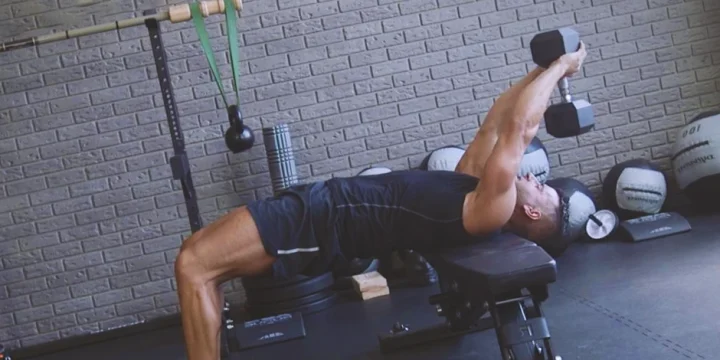
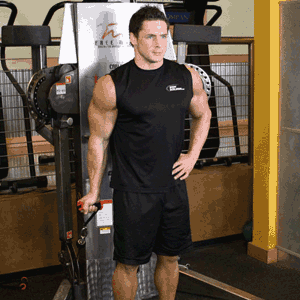 2 - Cable Curl with One Arm While Standing
2 - Cable Curl with One Arm While Standing